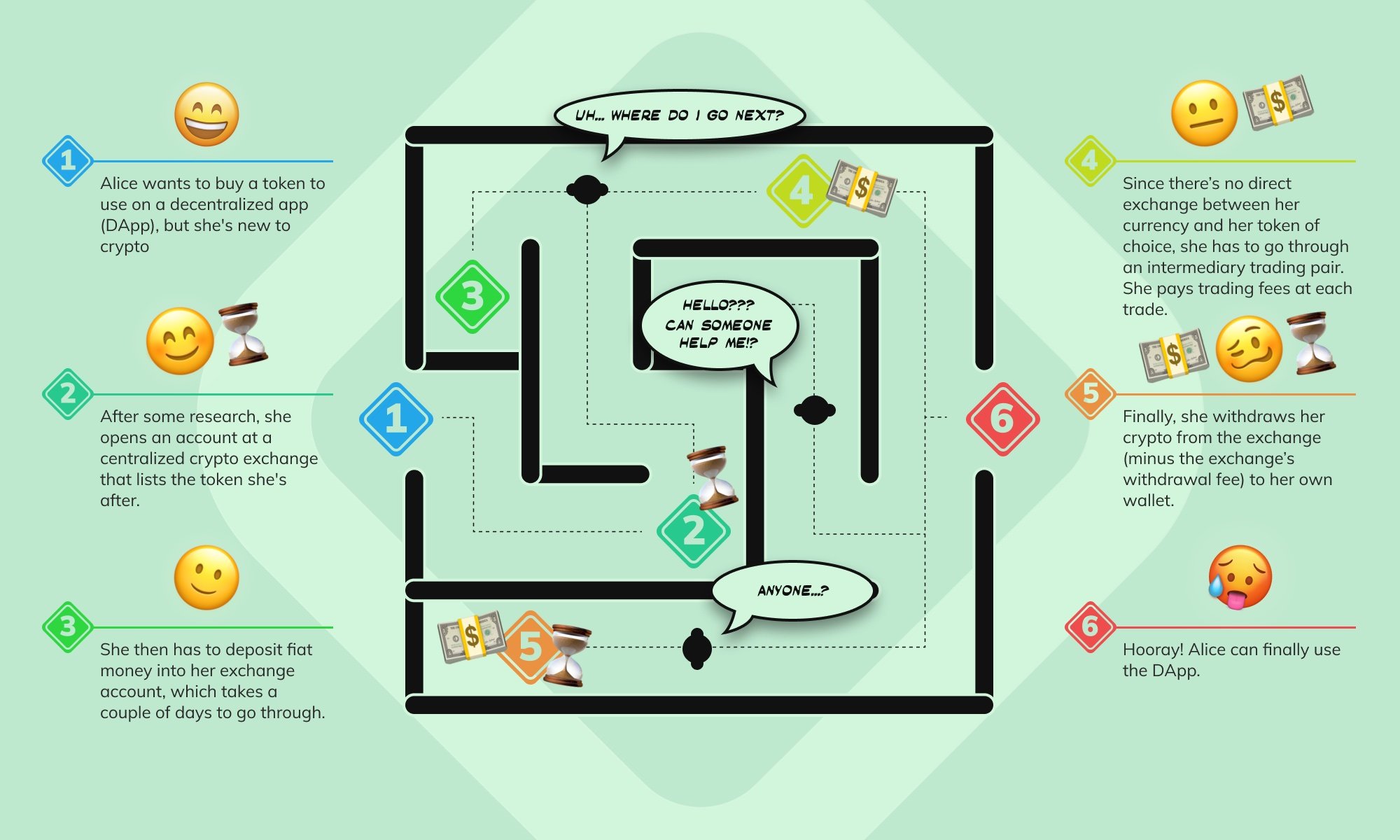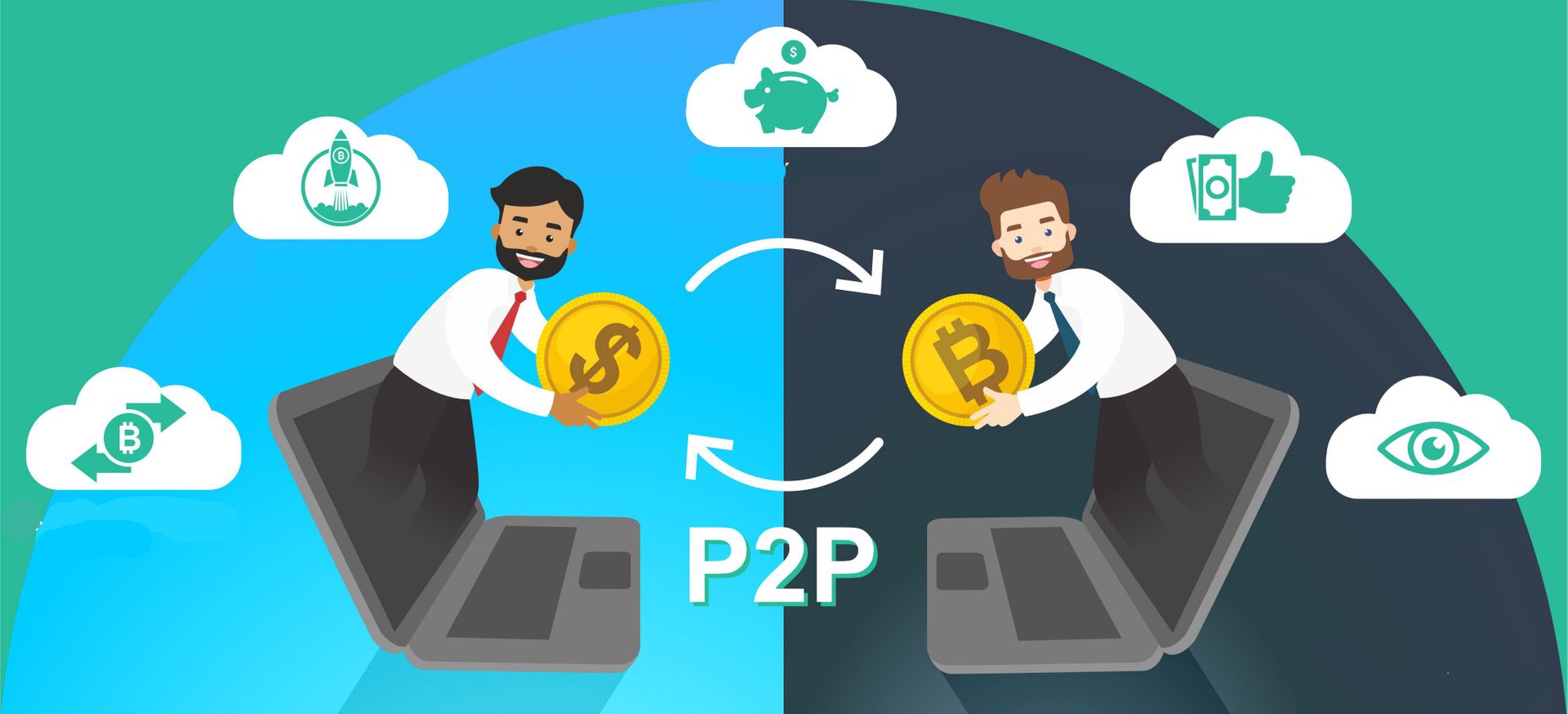Getting cryptocurrency earnings from your wallet into your bank account is a major challenge in DeFi and Web3.
While using your crypto to pay for things like coffee or make real-world purchases would be ideal, adoption has been slow for those earning on-chain through DAOs or DeFi for some time.
We understand that off-ramping crypto can be time-consuming and frustrating, but knowing how to make the best use of on-ramp and off-ramp crypto can make it much easier.
This article will provide you with all the information you need about crypto on-ramps and off-ramps so you can confidently leap.
What’s the Origin of Crypto Off-ramps?
Crypto off-ramps were introduced to provide a convenient way for users to convert their cryptocurrencies into traditional currencies.
Mt. Gox was one of the first exchanges to provide this service to early Bitcoin adopters.
Selling cryptocurrencies became more accessible and convenient with the emergence of off-ramps. More advanced off-ramps, including peer-to-peer marketplaces and OTC trading desks, are available today. These services cater specifically to users looking to convert their crypto into fiat.
What is a Crypto Off-ramp?
A crypto off-ramp is a helpful service that enables individuals to convert their digital coins into conventional fiat money, such as euros or dollars.
Think of the off-ramp as a bridge between two worlds: the world of DeFi and the world of traditional finance (TradFi). This bridge makes it possible to utilize crypto assets for everyday activities like grocery shopping or fueling a vehicle.
Most businesses do not accept crypto, but with off-ramps, crypto investors can be at a filling station while off-ramping their cryptocurrency to pay for fuel immediately without waiting 5 business days to receive their fiat.
What Is The Difference Between An Off-Ramp And An On-Ramp?
An on-ramp crypto platform allows users to acquire cryptocurrencies and get access to their respective markets. Conversely, an off-ramp crypto platform assists users in disposing of their cryptocurrencies or exiting the cryptocurrency markets.
On-ramp transactions enable the conversion of fiat currency to cryptocurrencies, while off-ramps facilitate the conversion of cryptocurrencies back to fiat currency.
It’s worth noting that some platforms can perform both functions, acting as a seamless gateway for users to enter and exit the crypto space.
Although off-ramp transactions take longer, transaction fees are higher on on-ramps.
In conclusion, choosing a secure and reliable on-ramp or off-ramp is crucial to ensure successful cryptocurrency transactions.
What Problems Do On and Off-Ramp Crypto Solutions Solve?
Crypto enables users to access and exit the DeFi and Web3 ecosystem on and off-ramp. However, there are 4 main problems that crypto ramps solve.
- Accessibility
- Liquidity
- Security
- Education
Accessibility.
Individuals and businesses can easily enter and exit the cryptocurrency market through on-ramps and off-ramps. These ramps allow users to buy and sell cryptocurrencies conveniently using traditional fiat currencies like the US dollar or other cryptocurrencies.
Liquidity.
By offering convenient ways for users to buy and sell their assets, on-ramps and off-ramps can help enhance the crypto market’s liquidity. This increased liquidity can enable users to move their assets more efficiently and contribute to a reduction in market volatility.
Security.
Several on-ramps and off-ramps provide added security features, such as cold storage and multi-factor authentication, to safeguard user assets. This helps minimize the risk of fraudulent activities and hacking, ultimately ensuring a safer environment for crypto transactions.
Education.
Educational resources and tools are often available on these on-ramp and off-ramp crypto platforms. They assist users in comprehending crypto usage and making informed choices regarding their investments.
The Top Crypto Off-Ramp Platforms
It can be difficult to navigate the cryptocurrency market, especially when you want to convert digital assets into fiat currency. Numerous platforms are available for buying and selling crypto, and selecting the appropriate off-ramp is essential.
Here are the top 5 crypto off-ramps, parading helpful features, exciting benefits and more perks.
How to Off-Ramp Crypto
- Spend your Crypto on Goods and Services
- Off-ramp Through an Exchange
- Off-Ramp via a Crypto Debit Card
- Peer-to-Peer (P2P) Platforms
Spend your Crypto on Goods and Services
Off-ramping can be as simple as using cryptocurrency to purchase goods and services directly. However, this process is a bit more intricate than it seems.
Although some countries like El Salvador and some companies such as Travala and Tesla accept cryptocurrencies as legal tender, the overall adoption of cryptocurrencies is still not widespread.
Thus, while there may be a few places that allow you to use certain coins and tokens for payment, this option is unlikely to be your primary off-ramp at present.
Off-ramp Through an Exchange
Fiat-to-Crypto exchanges are widely used by individuals who wish to convert their cryptocurrencies to traditional fiat currencies simply and directly.
These exchanges work as middlemen, enabling users to sell their digital assets and receive fiat money, which is then transferred to their bank accounts.
Off-Ramp via a Crypto Debit Card
Crypto debit cards offer a unique solution that connects the digital and physical worlds. They enable users to buy goods and services at merchants that accept traditional payment methods by linking their cryptocurrency wallets to the cards.
When a transaction occurs, the selected cryptocurrency is automatically converted to fiat currency, making it easy to spend money in daily life. Although crypto debit cards provide convenience and flexibility, users should be cautious of conversion fees and possible market fluctuations.
Peer-to-Peer (P2P) Platforms
P2P platforms serve as both on-ramps and off-ramps for cryptocurrency holders. They enable users to buy cryptocurrencies with fiat money and facilitate direct trading between individuals.
This means that users can sell their cryptocurrencies to others in exchange for fiat money using P2P off-ramps.
Factors to Consider When Choosing Off-Ramps
- Security Measures and Reputation of the Platform
- Supported Cryptocurrencies and Fiat Currencies
- KYC/AML Compliance and Privacy Concerns
- Transaction Fees and Costs
- User-Friendly Interface and Customer Support
Security Measures and Reputation of the Platform
Security is always a priority when dealing with cryptocurrencies. Before choosing a platform for on-ramps and off-ramps, carefully assess their reputation and security protocols. Conducting thorough research on the platform’s past incidents of security breaches is necessary.
Supported Cryptocurrencies and Fiat Currencies
Note that different on-ramps and off-ramps may support varying ranges of cryptocurrencies and fiat currencies. Therefore, ensuring that the platform you’re considering offers the specific cryptocurrencies you plan to trade or convert is crucial.
Furthermore, verify whether the platform supports the currencies you’re interested in before committing.
KYC/AML Compliance and Privacy Concerns
Adhering to regulatory requirements such as Know Your Customer (KYC) and Anti-Money Laundering (AML) compliance is a must for reputable platforms. This is necessary to prevent fraudulent activities and ensure security within the trading environment.
However, some users may prioritize privacy and opt for platforms with less intrusive KYC processes. Balancing privacy and security based on individual preferences and risk tolerance is important.
Transaction Fees and Costs
The cost of transactions may differ considerably between various on-ramps and off-ramps. Certain platforms offer reasonable fee arrangements for trading, whereas others may charge higher fees for the ease of use they provide.
Considering the effect of transaction fees on your overall trading or conversion plan, especially if you engage in frequent transactions or intend to convert significant amounts of cryptocurrency is essential.
User-Friendly Interface and Customer Support
Having a user-friendly interface can significantly improve your experience with a platform.
When the navigation is intuitive, and the instructions are clear, it becomes much easier to conduct transactions seamlessly. Furthermore, if the interface is responsive, you can complete tasks quickly and efficiently.
Avoiding Common Pitfalls and Scams
To ensure safe online transactions, avoid these pitfalls when funding or withdrawing from your online wallets:
- Be Cautious of Phishing Attempts: Watch out for phishing attempts, as fraudsters attempt to deceive you into providing your login credentials or personal data. Be cautious about clicking on suspicious links, and ensure that any emails or messages you receive from on-ramp or off-ramp platforms are genuine before responding to them.
- Conduct Due Diligence in P2P Transactions: When utilizing peer-to-peer platforms as off-ramps, be cautious when dealing with traders you are not familiar with. Research their reputation, feedback, and trade history to ensure the trader is dependable and trustworthy.
Frequently Asked Questions (FAQs)
-
Why do banks reject crypto?
Cryptocurrency exchanges face reluctance from banks as they worry about potential instances of money laundering, fraud, and other illegal activities linked with cryptocurrencies. Banks refrain from accepting deposits from cryptocurrency exchanges due to the cryptocurrency market’s lack of regulatory oversight and high volatility.
-
Why is it important to choose a secure crypto wallet?
Cryptocurrency exchanges are vulnerable to hacking, which can result in the loss of assets kept in the exchange’s wallets. To reduce these risks, users must select a wallet provider with robust security features, such as cold storage, multi-signature authentication, and secure key generation.
-
What are some easy methods for selling cryptocurrency?
There are several ways to sell your cryptocurrency. Some of the easiest options include an online cryptocurrency exchange, conducting direct peer-to-peer (P2P) transactions online or in person, or using a Bitcoin ATM.
-
Is there a way to buy Bitcoin without using an exchange?
P2P Bitcoin trading allows users to buy and sell Bitcoin directly without involving intermediaries or conventional exchanges. It is, in essence, a way of carrying out cryptocurrency transactions in a decentralized manner.
-
Will it become easier to purchase Bitcoin in the future?
Purchasing Bitcoin may become easier in the future for the following reasons:
- More companies and institutions are accepting Bitcoin as a legitimate form of payment.
- Governments and regulatory bodies worldwide are becoming more familiar and receptive to cryptocurrencies and may enact policies that make buying and selling Bitcoin easier.
- Technology continues to advance, and it will become easier for people to purchase Bitcoin using their mobile devices or other digital tools.



